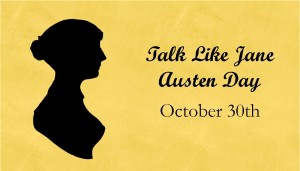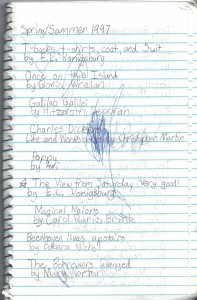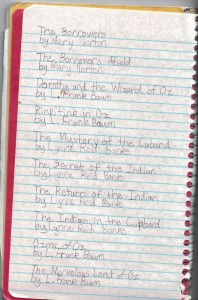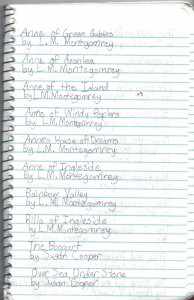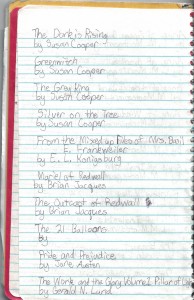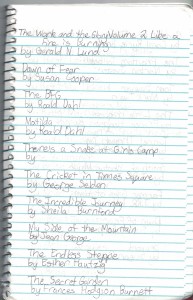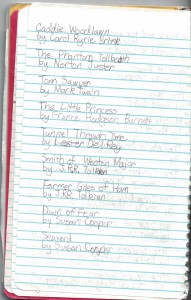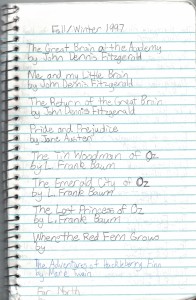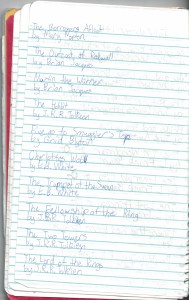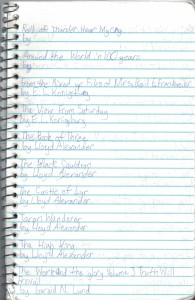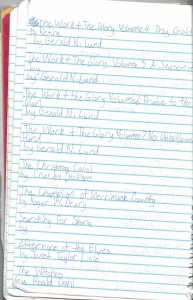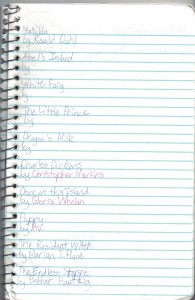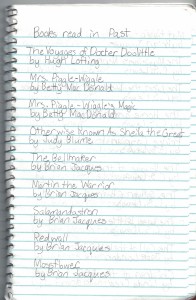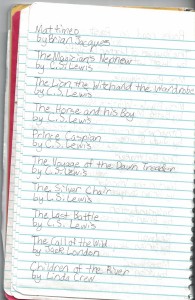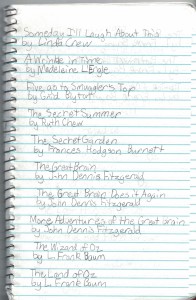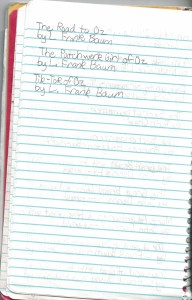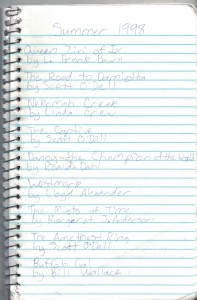
Books are well-loved in my family, so it was quite natural to throw a book-themed birthday party. Having a Fancy Nancy themed birthday party made it so my daughter could have all the fancy, pink things she wanted. For activities we did everything from Fancy Nancy crafts to a Fancy Show and Tell.
You could easily throw a Fancy Nancy birthday party for children from ages 3 to 8 (and there are books targeted to both slightly younger and slightly older children). In this blog post I’ve included alternate activity ideas in addition to the ones I used. I’ve also included my approximate prices.
Fancy Apparel
What’s a Fancy Nancy party without fancy apparel? On the invitation we invited everyone to wear fancy clothes to the party. My husband even wore his tuxedo.

My daughters in their fancy clothes, waiting for the guests to arrive.
Opening Activity: Pin the Accessories on Fancy Nancy
 I made a large Fancy Nancy poster and printed and cut out lots of jewelry, bows, ribbons, butterflies, and other decorations.
I made a large Fancy Nancy poster and printed and cut out lots of jewelry, bows, ribbons, butterflies, and other decorations.
When the kids arrived, they were able to color in the accessories and then tape then on to Fancy Nancy. Because my daughter and her friends are rather young, they pinned the accessories on with their eyes open. Slightly older children could do it blindfolded.
 Planning your own party:
Planning your own party:
If you want to print a poster at Office Max or another copy place, download a high quality file from Google. (On Google Images search Fancy Nancy. Click on Search Tools, Choose Size, and then select Large so you have a high quality image.)
I actually created my own poster by using a high quality black and white image, expanding it in Microsoft Excel, and then printing, assembling, and coloring it myself.
Fancy Nancy Crafts
 I found a ridiculous number of paper crowns at Hobby Lobby for $2, bought sequins, and provided fun markers and glue. And then the kids decorated fancy crowns.
I found a ridiculous number of paper crowns at Hobby Lobby for $2, bought sequins, and provided fun markers and glue. And then the kids decorated fancy crowns.
For those who finished their crowns more quickly, I also printed out Fancy Nancy coloring pages from Fancy Nancy World, an awesome website made by the publishers of the Fancy Nancy books.
Fancy Show and Tell
This was one of the highlights of our Fancy Nancy birthday party. On the invitation, we asked each of the kids to bring a fancy item for show and tell. The kids had an awesome time talking about their fancy items, and it was a great way to introduce kids who didn’t know each other.
Fancy Nancy Story Time and Dancing
What is a Fancy Nancy party without story time?
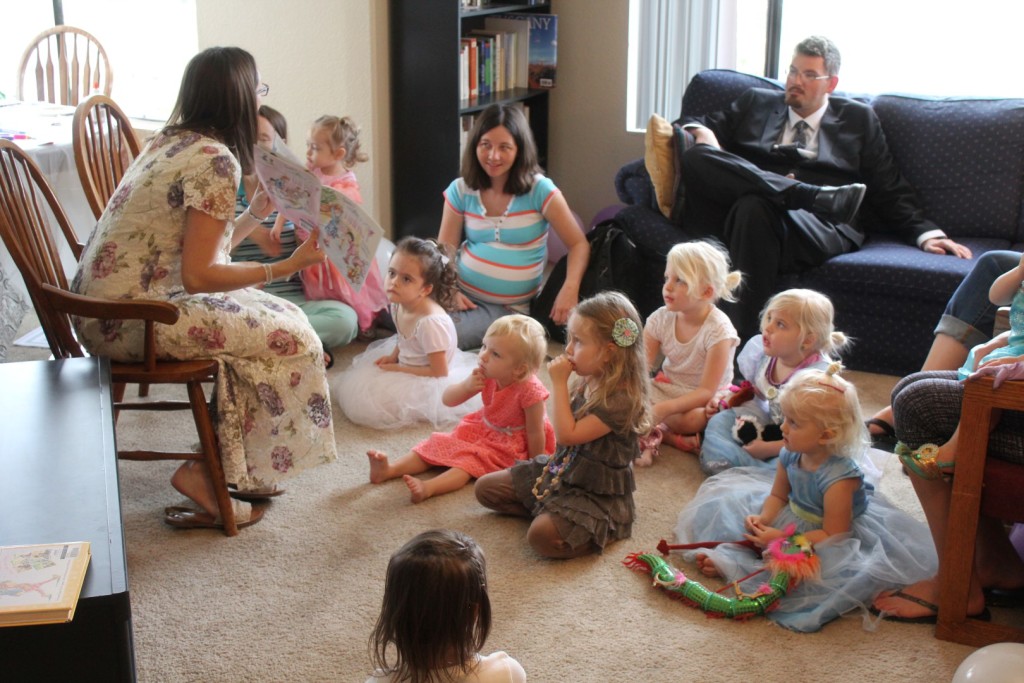
I read the kids the book Fancy Nancy: Budding Ballerina (which you can buy on Amazon for a few dollars).
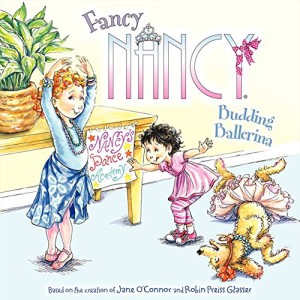 In this book, Fancy Nancy decides to teach ballet lessons to her family. It’s a delightful little story.
In this book, Fancy Nancy decides to teach ballet lessons to her family. It’s a delightful little story.
After reading the book, all the kids got to dance, which was one of the highlights of the party. My daughters loved spinning and twirling with their friends. For music they chose “Dance of the Sugar Plum Fairy.” There are also lots of great CD collections like The Little Ballerina! The Greatest Classical Ballet Music for Kids.
They also danced to the song “Anyone Can Be Fancy” from Fancy Nancy: The Musical. Yes, there’s a Fancy Nancy musical. It’s very existence makes me happy.
Fancy Nancy Birthday Treats and Party Favors

My daughter insisted on a Funfetti cupcake mix and pink frosting (she actually planned this part over six months in advance of the party). I bought several cans of Betty Crocker Cupcake Icing at the store, which made decorating the cupcakes really easy, as they already comes with four tips. (I just used the basic flower one, and went in circles from the outside of the cupcake in.) My daughters added sprinkles and umbrella toothpicks (Walmart–$4). The results are very similar to the cupcakes Fancy Nancy makes in the books.

 For favors I bought a couple packs of girly party favors (which you can buy from a party store, Walmart, Target, etc.). I also purchased candy bracelets, extra rings and butterfly hair clips to add to the mix. And the favorite party favor of all: ring pops (from the dollar store).
For favors I bought a couple packs of girly party favors (which you can buy from a party store, Walmart, Target, etc.). I also purchased candy bracelets, extra rings and butterfly hair clips to add to the mix. And the favorite party favor of all: ring pops (from the dollar store).
If you want to go to the next level, you could give each kid a Fancy Nancy book. There are a number of paperbacks available for just a few dollars a copy. (For example, Tea for Two, Puppy Party, The Delectable Cupcakes, Super Secret Surprise Party, or, if you have slightly older kids and want an early chapter book, Secret of the Silver Key.)
Fancy Nancy Birthday Party: Additional Activity Ideas
- Fancy smells (perfume testing) or for older children, fancy nails
- A Fancy Nancy rhyming or fancy words activity
- Making fancy name tags or hair clips
- Turn the birthday party into a tea party, and read Tea for Two
- Fancy Nancy Hide ‘n Peek House Game (this is an awesome game, targeted for ages 6 and up, though you can simplify it for younger kids). This would work well for a more intimate party, with 5 or 6 guests.
- Fancy Nancy World has a number of printable games and crafts that could be used or adapted for a party.
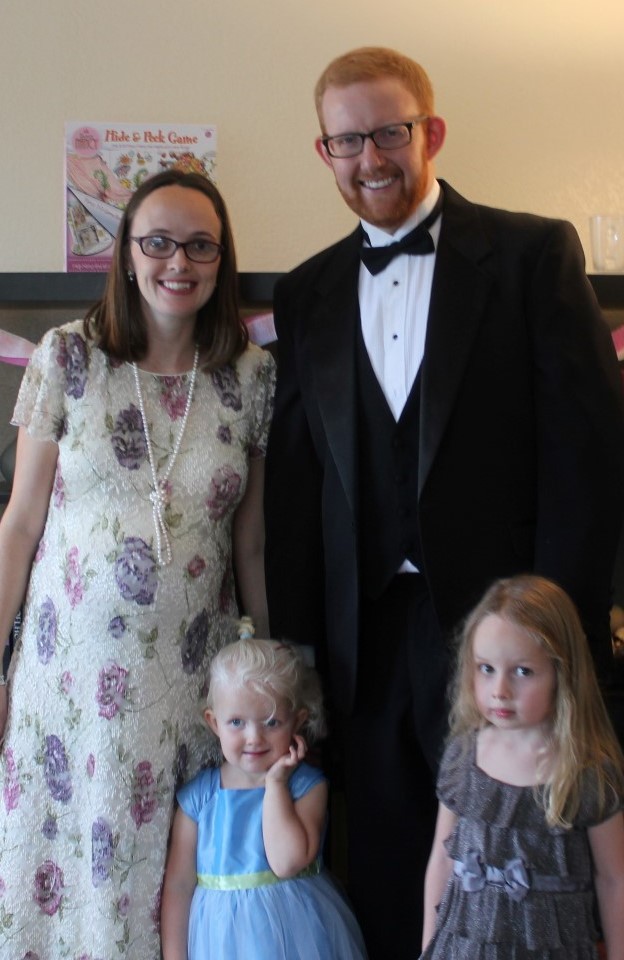
My daughters were pretty worn out by the end of the party (when we had this picture taken) but they loved the party and so did the guests!



 It was made by my daughter Myra. When “The Clockwork Seer” was released in the anthology Steel and Bone in June, Myra asked me to read it to her. It took two days, but she listened attentively to the entire thing, despite the lack of any pictures.
It was made by my daughter Myra. When “The Clockwork Seer” was released in the anthology Steel and Bone in June, Myra asked me to read it to her. It took two days, but she listened attentively to the entire thing, despite the lack of any pictures.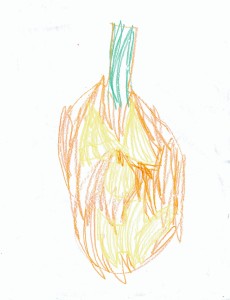 Myra said, “I drew you a pumpkin because your next story needs to be a Halloween story. And it needs to have witches and wizards in it.”
Myra said, “I drew you a pumpkin because your next story needs to be a Halloween story. And it needs to have witches and wizards in it.”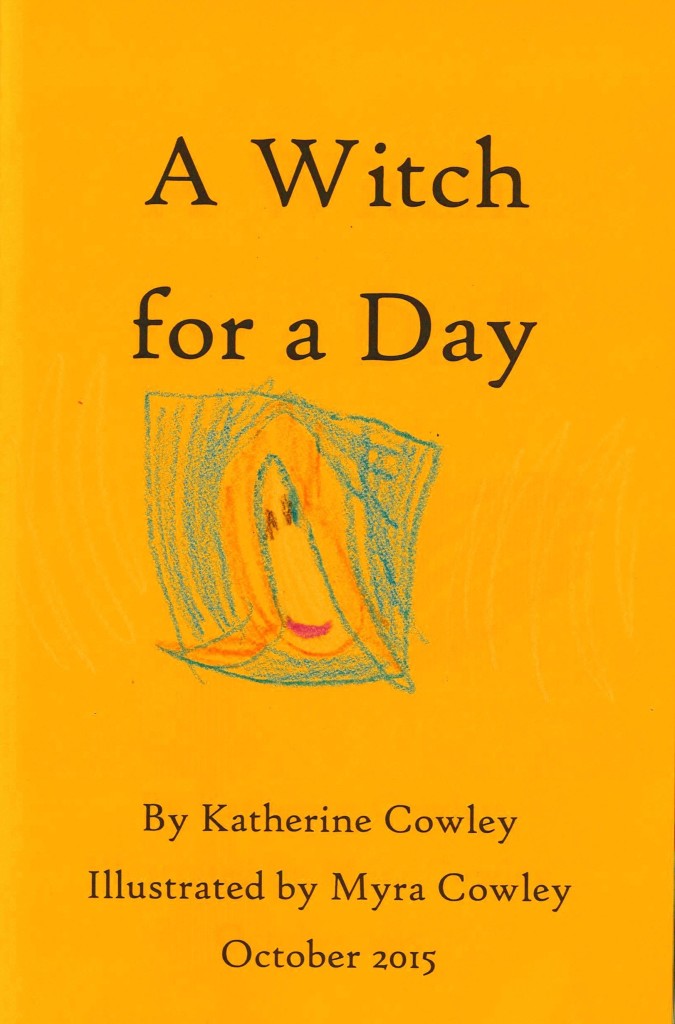
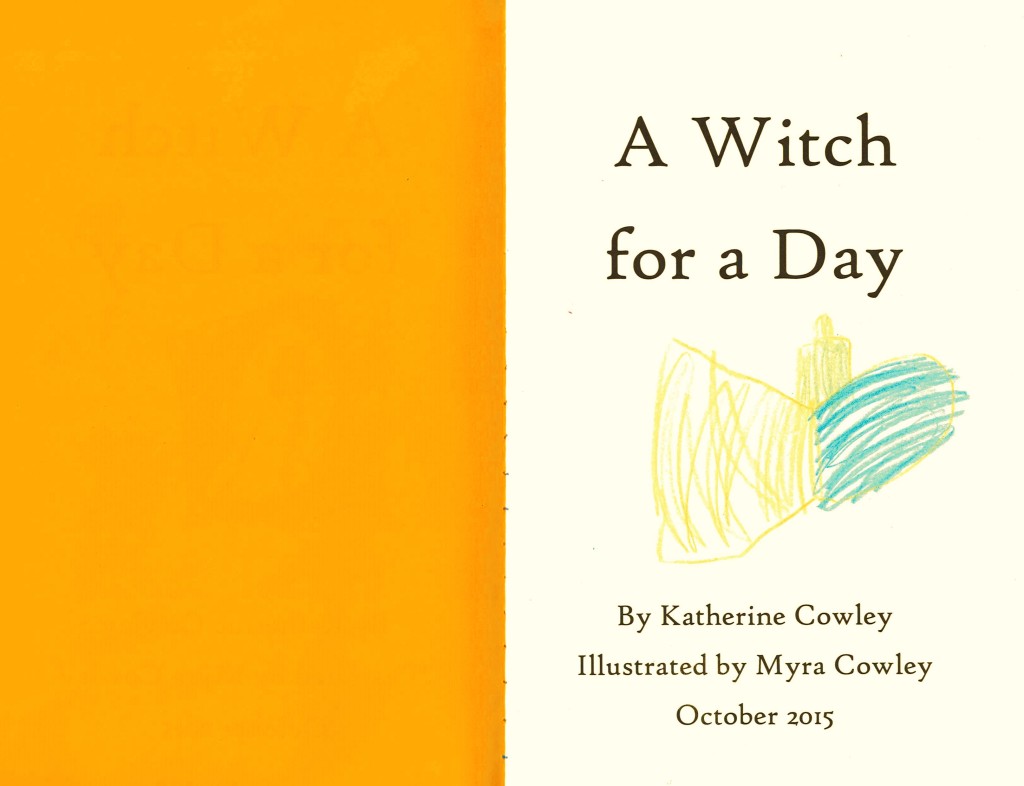

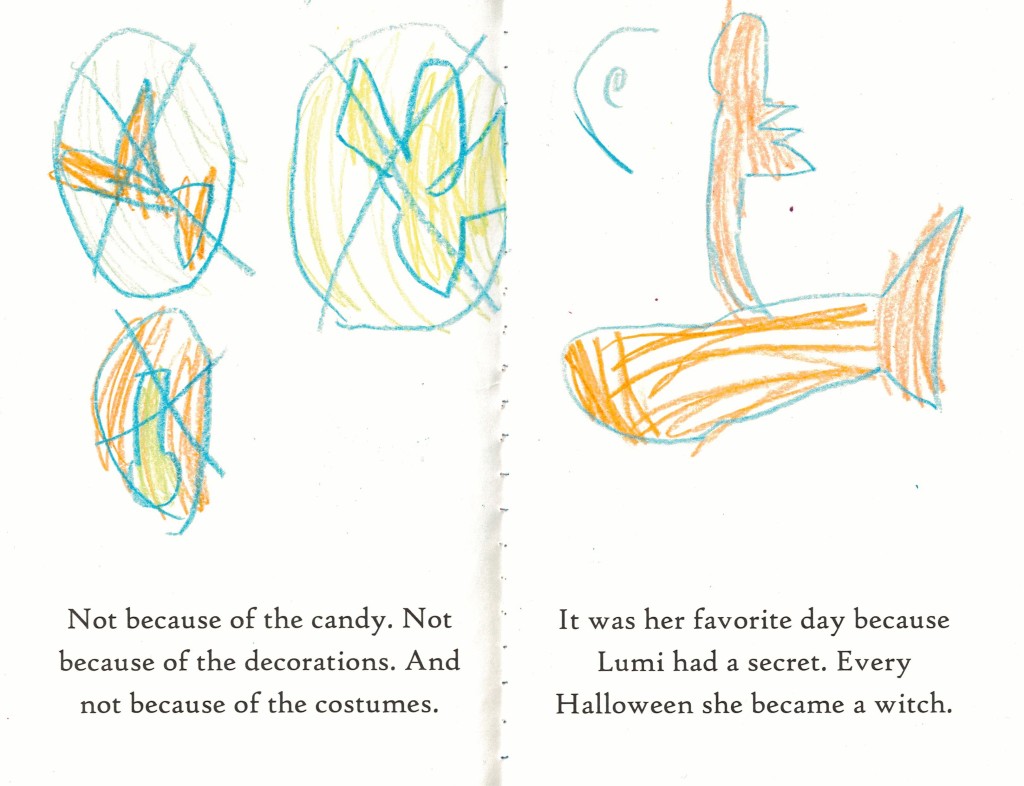
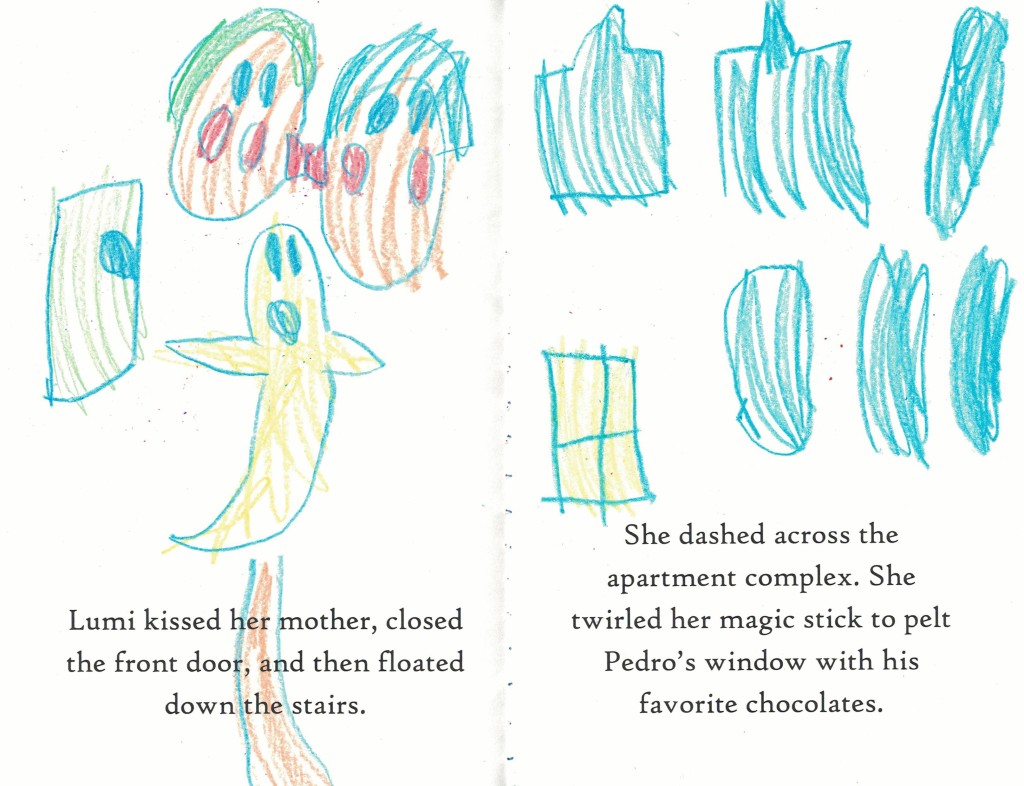
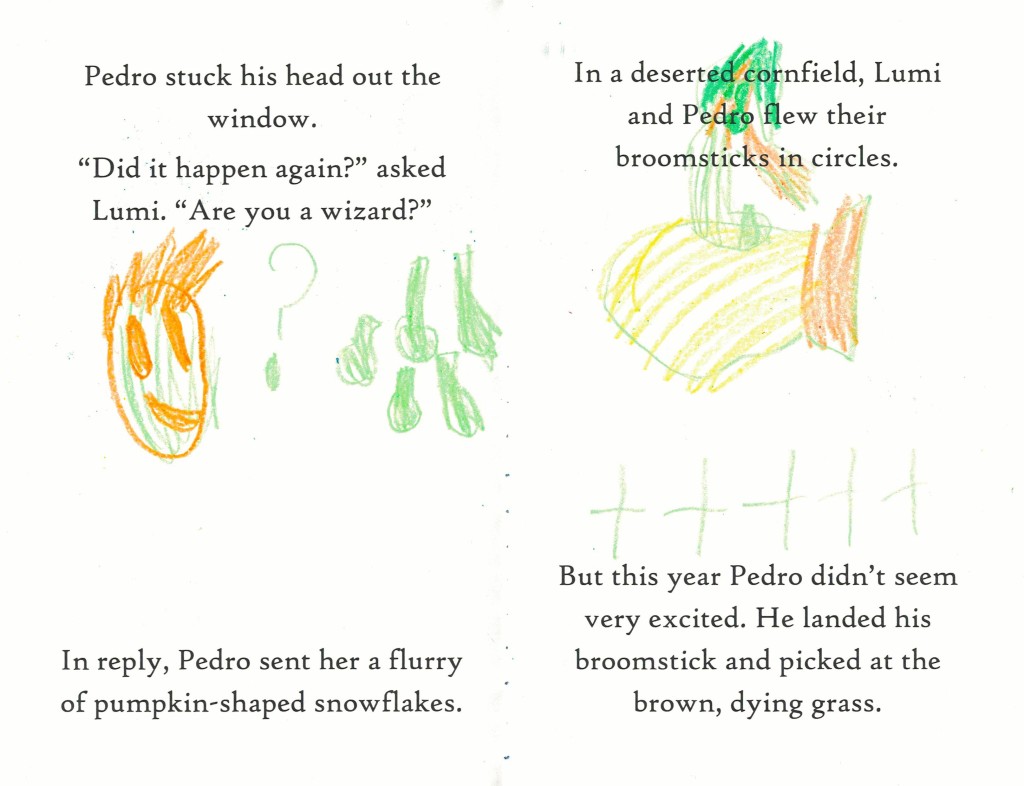
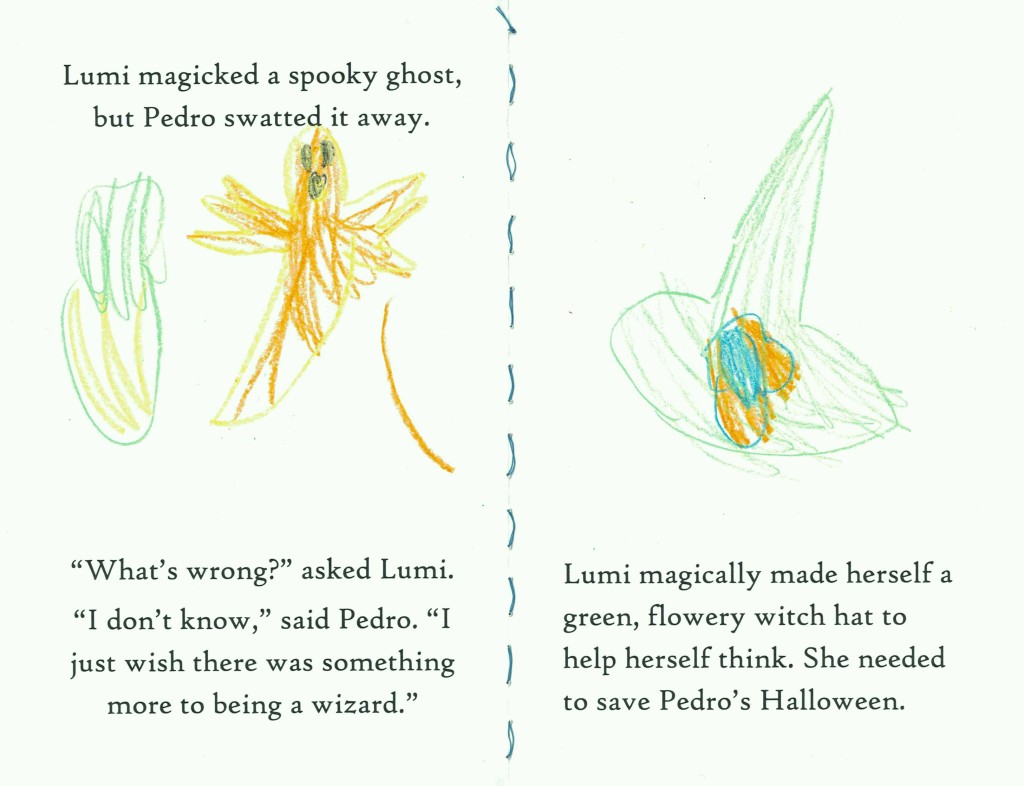
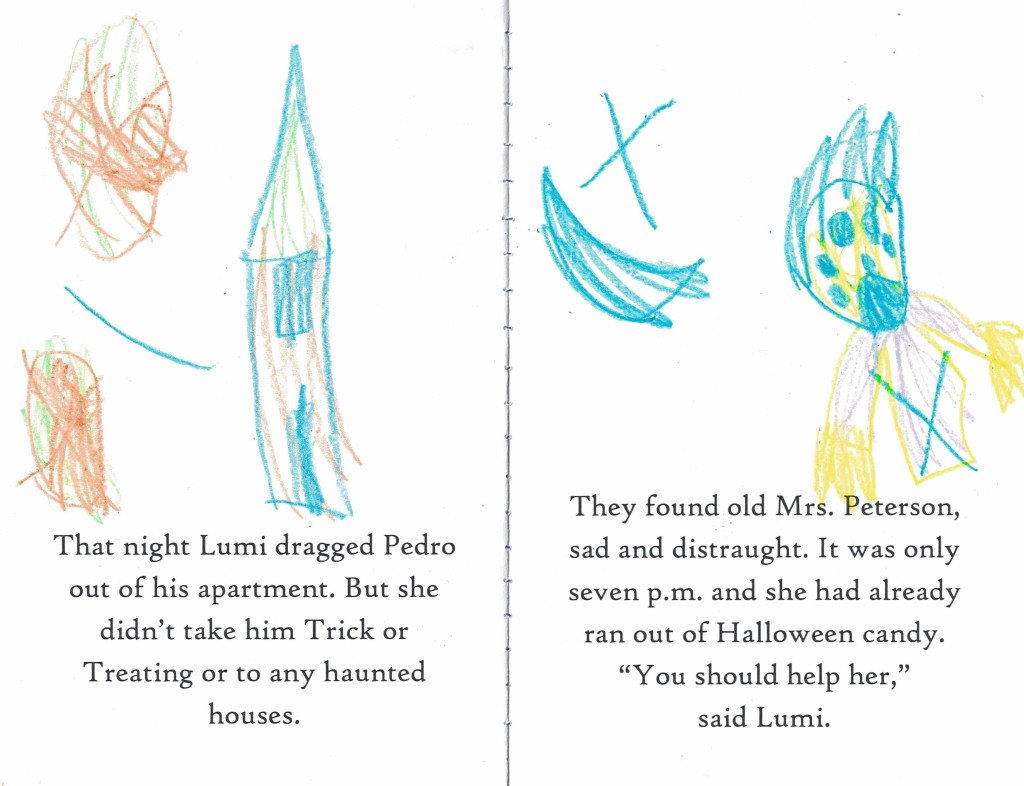
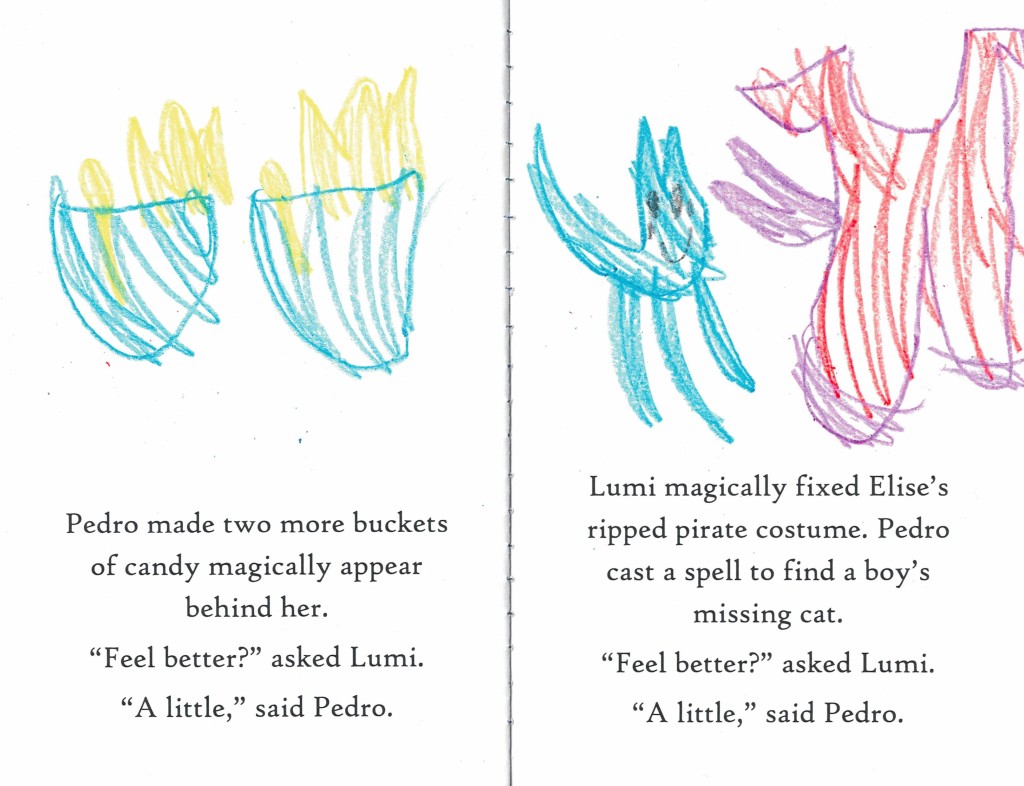
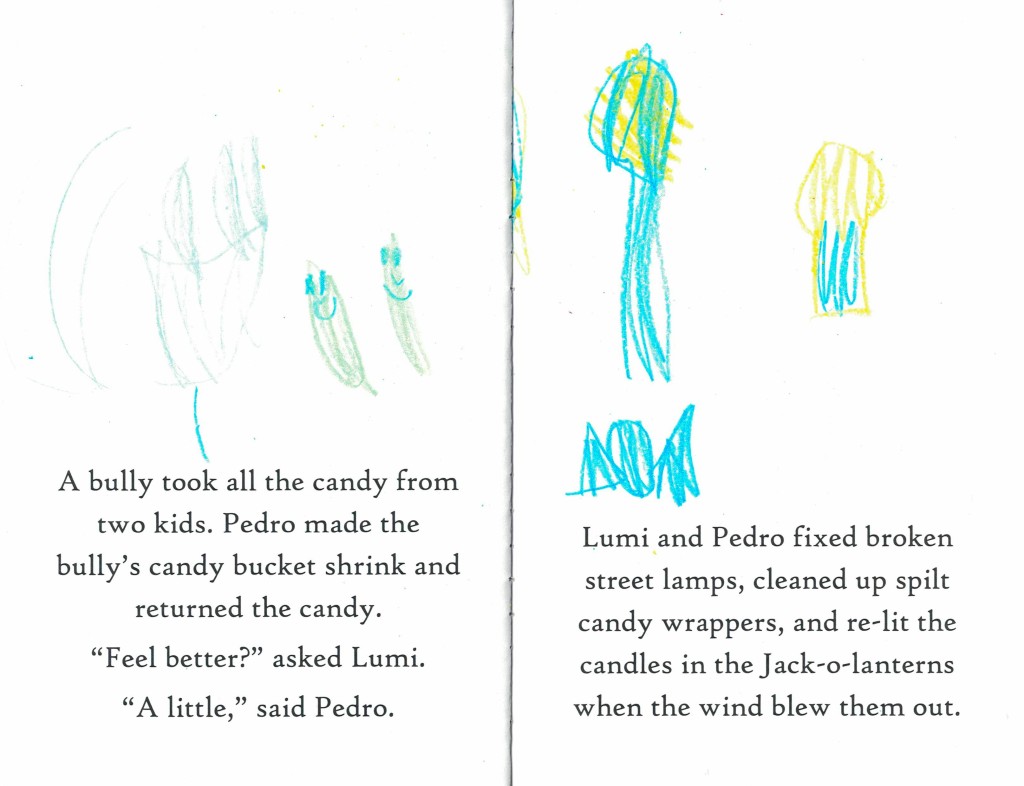
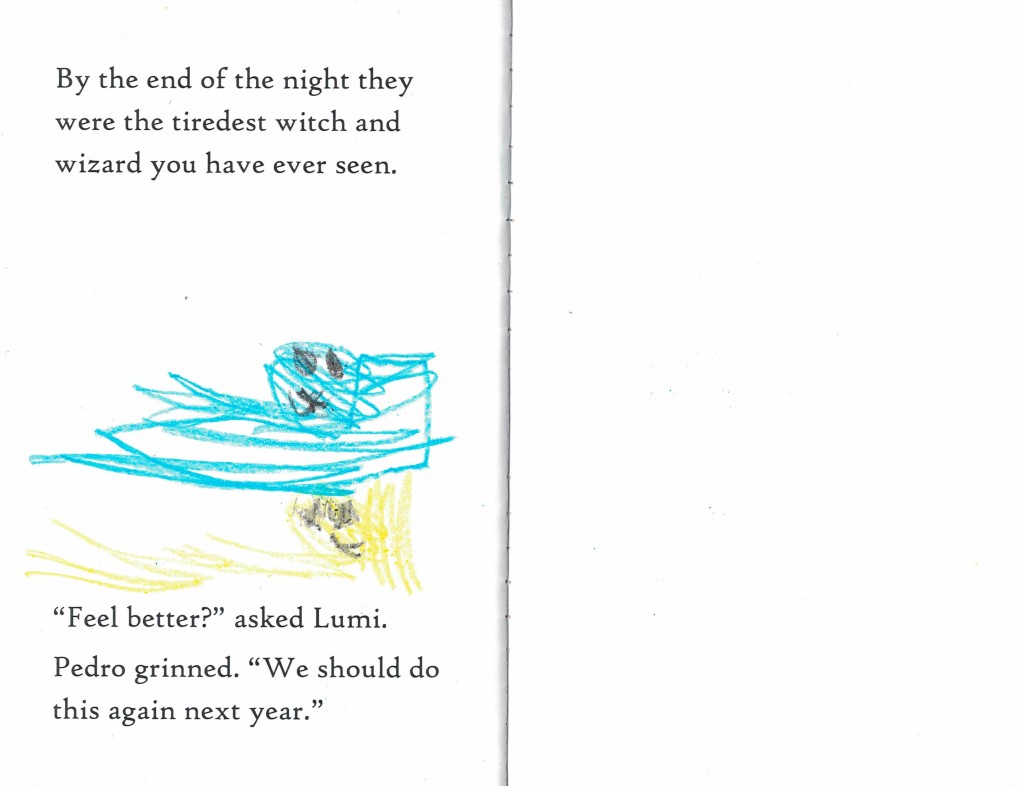

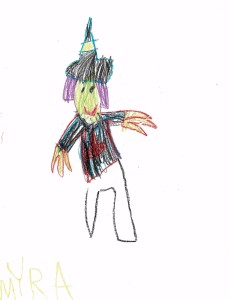



 I made a large Fancy Nancy poster and printed and cut out lots of jewelry, bows, ribbons, butterflies, and other decorations.
I made a large Fancy Nancy poster and printed and cut out lots of jewelry, bows, ribbons, butterflies, and other decorations. Planning your own party:
Planning your own party: I found a ridiculous number of paper crowns at Hobby Lobby for $2, bought sequins, and provided fun markers and glue. And then the kids decorated fancy crowns.
I found a ridiculous number of paper crowns at Hobby Lobby for $2, bought sequins, and provided fun markers and glue. And then the kids decorated fancy crowns.



 For favors I bought a couple packs of girly party favors (which you can buy from a party store, Walmart, Target, etc.). I also purchased candy bracelets, extra rings and butterfly hair clips to add to the mix. And the favorite party favor of all: ring pops (from the dollar store).
For favors I bought a couple packs of girly party favors (which you can buy from a party store, Walmart, Target, etc.). I also purchased candy bracelets, extra rings and butterfly hair clips to add to the mix. And the favorite party favor of all: ring pops (from the dollar store).
